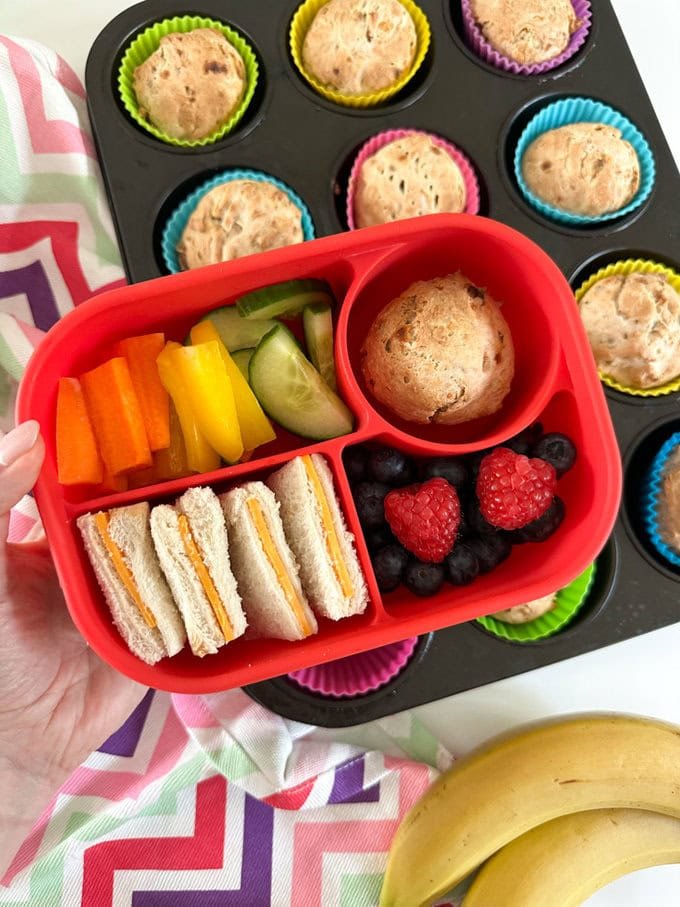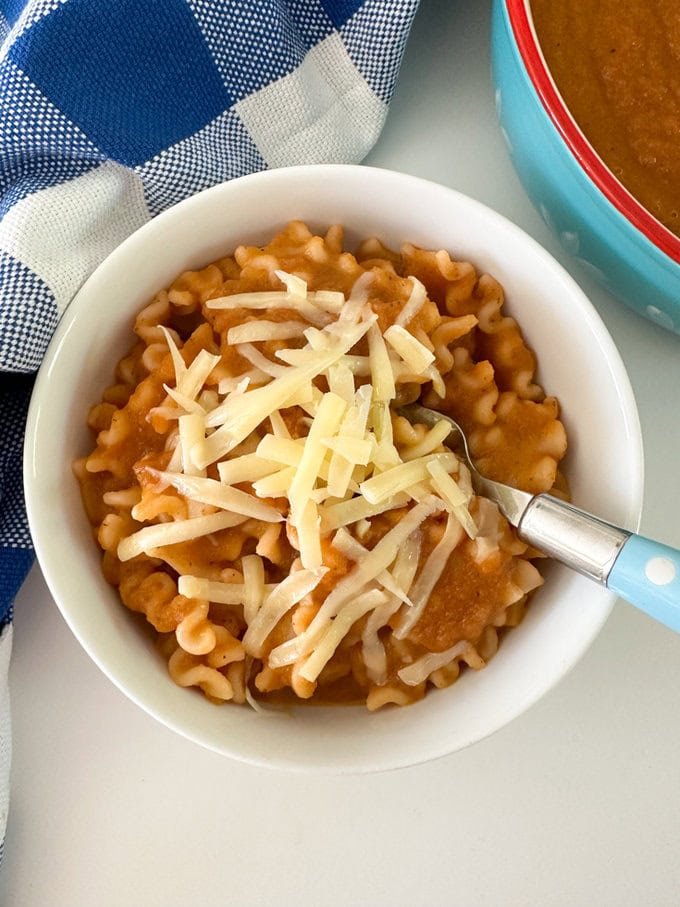[ad_1]
You shouldn’t have to buy new clothes specifically for bulking. Realistically, lean bulking takes a lot of time, and when done correctly you’re unlikely to add more than 2-3lbs of muscle mass per month. Most people should be able to fit comfortably into the same clothes with a 10lb muscle gain. However, if you are struggling to fit into the same clothes after just a few weeks you’re probably not bulking correctly, i.e. you are gaining more fat than muscle.
Bulking Shouldn’t Happen That Quickly

I think many of us have delusions of grandeur when it comes to bulking.
By this I mean that we start off with a fairly decent physique, typically lean with some good muscle mass.
However, we then expect to eat everything in sight, hit PRs in the gym daily, and suddenly a month later we’ve transformed into Dwayne Johnson’s long-lost twin.
Time for a wake up call – it simply doesn’t work like that.
In fact, bulking is a long, slow, and arduous process.
And this is especially true if you’re doing it correctly.
Realistically, your aim shouldn’t be to add more than 0.5lb lean muscle mass per week.
Okay, I know that probably sounds pathetic.
But, this adds up to 26lbs over the course of a year.
And trust me when I say that ANYONE who adds 26lbs of lean muscle mass to their frame will completely transform their physique.
So, if you’re one week into your bulking phase and your clothes are already starting to feel tight, you’re doing it wrong (more on this in a moment).
In fact, you should still be able to fit perfectly well into your current clothes even with a 10lb lean muscle gain.
And working on the 0.5lb per week gains theory, that’s 20 weeks to get to that point.
Admittedly, once you’re into the realms of 15-20lbs PLUS in lean muscle gains then your clothes are definitely going to start to feel tighter.
However, that is 30-40 weeks into the future.
I would hazard a guess that most of us naturally buy more items of clothing during a 30-40 week period anyway.
Plus, we’ll typically have a complete wardrobe overhaul after another 30-40 weeks.
So, if you’ve just started your bulk then you still have a long time to go before you start worrying about whether your clothes fit.
Are You Bulking in the Right Places?
I’ve alluded to the fact that you could potentially be bulking incorrectly.
In fact, this is unfortunately the path that the vast majority of bulkers seem to follow.
Basically, food becomes a free-for-all, as in you literally eat everything in sight.
I mean, the aim of a bulk is obviously to put weight on.
However, in truth, bulking is actually about slowly adding muscle mass, while keeping fat gain to the bare minimum.

Admittedly, if you’re eating at a calorie surplus then you may end up adding fat as well as muscle.
But realistically, if you’re following the correct protocol this should be hardly noticeable.
If you’re putting on fat as a guy this is likely to be around the waist, lower back, and hips.
Whereas for a woman, you may find that your bras are tighter, and you’ll typically add fat to the hips, thighs and glutes.
In other words, if you are mainly adding fat when you’re putting on weight you’re most likely to feel a tightness in your lower body.
It’ll be harder to slip into a pair of jeans.
Probably even more difficult to zip up your flies and do up that top button.
As I’ve mentioned, if you’re noticing these difficulties after just a few weeks then you’re definitely doing bulking wrong.
Okay, you may eventually find that shirts and tops become tighter, but once again this shouldn’t be an issue for over 6 months.
So, if you are struggling to get into your clothes within a short space of time I urge you to relook at how you’re bulking.
Do You Need a Bulking & Cutting Wardrobe?
I’ve noticed on various online fitness forums that the question of whether you should have a separate bulking and cutting wardrobe is often asked.
However, if this is the case, then once more you’re not doing it right.
Okay, I’ll admit that if you are specifically cutting and bulking for competitive purposes then your weight can fluctuate wildly.
It’s not unheard-of for a competitive bodybuilder to put on 40-50lbs during the off-season.
But, if you’re not a pro-bodybuilder your weight definitely shouldn’t be so interchangeable.
In fact, in many of the forum conversations that I read it seems that most lifters were on a constant cut and bulk cycle.
By this I mean that they were bulking for around 3-4 weeks, putting on a great deal of fat, so they would cut for 2-3 weeks, before returning to bulking again.
As I’ve mentioned numerous times, this is not how you should be doing it.

Yes, you will eventually need a new wardrobe as you add muscle mass.
But, as I say, this is probably 6-12 months down the line.
Plus, if you are constantly swapping in-between bulking and cutting cycles you certainly won’t be doing your health much good.
My advice is stop thinking about making massive, sweeping changes when it comes to bulking.
Take your time, aim to add not much more than 0.5lbs a week, and you won’t have to worry about constantly changing your wardrobe.
What Clothes Do You Prefer Wearing?

I guess the type of clothes you prefer wearing will also make a big difference to your requirement for a new wardrobe.
If you’re someone who likes wearing sweatpants and hoodies then you don’t really have much to worry about.
You know as well as me that casual wear typically offers a lot more give-and-take.
With that being said, if you’re wearing suits during the day and prefer to be in jeans and dress shirts at other times then things are a bit different.
However, I’ll reiterate that this realistically shouldn’t be a problem for a good few months if you’re bulking correctly.
A commonly-asked question is whether you should buy clothes that are slightly larger in order to fit into these as you get bigger yourself.
Personally, I would always recommend that you buy clothes that fit you now.
Remember, the aim is not to make huge changes, and the clothes you buy now should easily still fit you in a few months’ time.
Additionally, even most smart and smart-casual clothing now comes in stretch fit material.
This means that the clothes are meant to hug your body.
So, even if you do get ever so slightly bigger, your clothes will stretch in line with your gains.
Frequently Asked Questions
What is Dirty Bulking?
Dirty bulking is a term used in the fitness world to describe a phase where the primary goal is to gain as much weight as possible in a short amount of time, often without paying much attention to the quality of calories consumed.
This approach typically involves eating a significant calorie surplus, with less emphasis on nutrient-dense foods and more on high-calorie, often processed foods to easily increase calorie intake.
This is typically why some pro bodybuilders will feast on junk food while bulking.
The idea behind dirty bulking is to provide the body with an excess of calories to fuel muscle growth, under the assumption that a higher calorie intake will lead to faster and larger gains in muscle mass.
However, this method can also lead to substantial fat gain due to the high amount of calories consumed.
While it might seem appealing for those looking to gain size quickly, it’s important to consider the long-term implications, such as increased body fat, which will later need to be lost, usually through a cutting phase.

Many fitness experts advise caution with dirty bulking.
For example, renowned strength coach and nutrition expert, Dr. Layne Norton, has discussed the importance of maintaining a balance between gaining muscle and minimizing fat gain.
He suggests that a more measured approach, focusing on a slight calorie surplus with quality nutrients, can lead to better long-term results in body composition.
So, while dirty bulking can lead to rapid weight gain, it’s not the most efficient or healthiest way to build muscle.
It often results in unnecessary fat gain, which can be hard to lose later on.
A more controlled approach to bulking, focusing on a moderate calorie surplus and nutrient-dense foods, is generally recommended for sustainable muscle growth and overall health.
That being said, here’s an example of a “dirty bulk” meal plan.
| 🍔 “Dirty Bulk” Meal Plan for a 180lbs Man 🍕 | |
|---|---|
| Breakfast: | Large bagel with cream cheese Full-fat latte 3 pancakes with syrup |
| Mid-Morning Snack: | Chocolate bar Soda |
| Lunch: | Double cheeseburger with fries Milkshake |
| Afternoon Snack: | Pack of doughnuts Energy drink |
| Dinner: | Large pizza with extra cheese Garlic bread Soda |
| Evening Snack: | Ice cream (large bowl) Cookies (a few) |
| Brought to you by mybodyweightexercises.com | |
What Does a Healthy Bulk Look Like?
A healthy bulk focuses on gaining muscle mass with minimal fat gain by consuming a slight calorie surplus, emphasizing nutrient-dense foods, and following a consistent strength training program.
The key is to eat enough to support muscle growth but not so much that you gain excess fat.
This involves calculating your maintenance calories and adding a moderate surplus, usually around 250 to 500 calories.
High-quality proteins, complex carbohydrates, healthy fats, and plenty of fruits and vegetables should make up the bulk of your diet to ensure you’re getting the vitamins, minerals, and macronutrients your body needs to support muscle growth and recovery.
In addition to diet, a healthy bulk includes a well-structured training program focused on progressive overload to stimulate muscle growth effectively.
Adequate rest and recovery are also crucial, as muscles grow outside the gym while you’re resting.
Below is an example meal plan that provides a balanced mix of macronutrients to support muscle growth while ensuring that you’re also getting a wide range of micronutrients from fruits, vegetables, and whole grains.
It’s designed to create a moderate calorie surplus, conducive to muscle gain with minimal fat accumulation.
Remember, individual calorie needs can vary, so it’s important to adjust portions and food choices based on your progress, preferences, and specific dietary requirements.
| 🍏 Healthy Bulk Meal Plan for a 180lbs Male 🏋️♂️ | |
|---|---|
| Breakfast: | Oatmeal (1 cup cooked) with sliced banana and a tablespoon of almond butter Scrambled eggs (3 eggs) Greek yogurt (1 cup) |
| Mid-Morning Snack: | Protein shake with whey protein (1 scoop), mixed berries (1 cup), spinach (1 handful), and almond milk (1 cup) |
| Lunch: | Grilled chicken breast (6 oz) Quinoa (1 cup cooked) Steamed broccoli (1 cup) Avocado (1/2, sliced) |
| Afternoon Snack: | Whole grain toast (2 slices) with cottage cheese (1/2 cup) and sliced tomato Almonds (1 oz) |
| Dinner: | Baked salmon (6 oz) Sweet potato (1 medium, baked) Mixed green salad with olive oil and vinegar dressing |
| Evening Snack: | Casein protein shake (1 scoop) or a small bowl of cottage cheese with cinnamon |
| Brought to you by mybodyweightexercises.com | |
Key Learning Points
- It isn’t necessary to buy clothes while bulking if you bulk correctly.
- Your aim should be to add lean muscle mass and minimal body fat.
- Plan to gain approximately 0.5lbs a week.
- Most trainees will still be able to fit into the exact same clothes even with a 10lb muscle gain.
- Once you get into the realms of 15-20lbs muscle gain you’ll need to start looking at new clothes.
- Therefore, new clothes while bulking shouldn’t be a concern for at least 30-40 weeks, as long as you are bulking correctly.
- “Dirty bulking” typically involves an excess of calories from processed foods, although you’ll usually gain much more fat than lean muscle.
- A “clean bulk” is focused on creating a moderate calorie surplus, which is ideal for muscle gain without accumulating too much body fat.
If you want to pack on muscle without gaining body fat then check out Massthetic Muscle.

Hi, I’m Partha, owner and founder of My Bodyweight Exercises. I am a Level 3 Personal Trainer and Certified Strength & Conditioning Specialist through the Register of Exercise Professionals, United Kingdom. I have been a regular gym-goer since 2000 and coaching clients since 2012. My aim is to help you achieve your body composition goals.
[ad_2]







